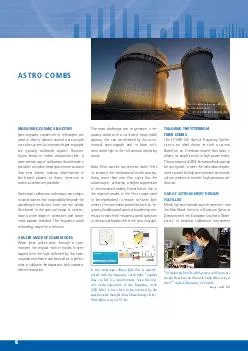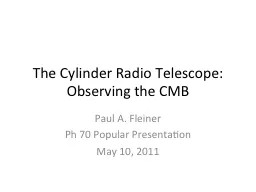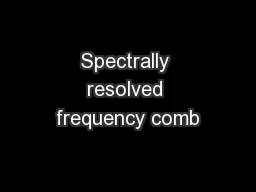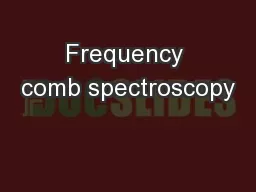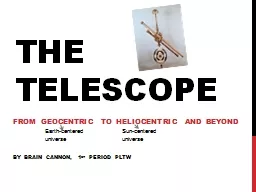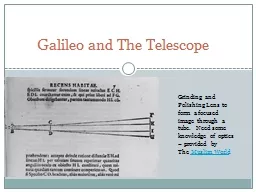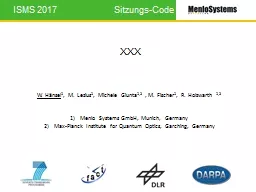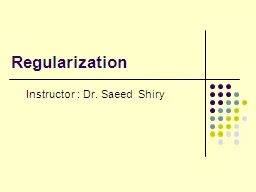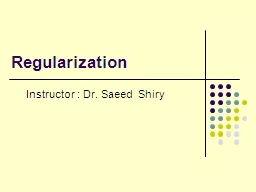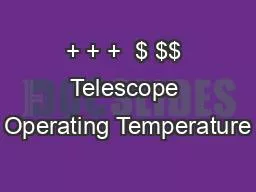PDF-A solar telescope collects light that is superim posed with the frequency comb light
Author : tatyana-admore | Published Date : 2015-01-16
Together they are fed to a spectrometer Since the orig inal mode separation of the frequency comb 250 MHz is too close to be resolved by the spectrometer the light
Presentation Embed Code
Download Presentation
Download Presentation The PPT/PDF document "A solar telescope collects light that is..." is the property of its rightful owner. Permission is granted to download and print the materials on this website for personal, non-commercial use only, and to display it on your personal computer provided you do not modify the materials and that you retain all copyright notices contained in the materials. By downloading content from our website, you accept the terms of this agreement.
A solar telescope collects light that is superim posed with the frequency comb light: Transcript
Download Rules Of Document
"A solar telescope collects light that is superim posed with the frequency comb light"The content belongs to its owner. You may download and print it for personal use, without modification, and keep all copyright notices. By downloading, you agree to these terms.
Related Documents

